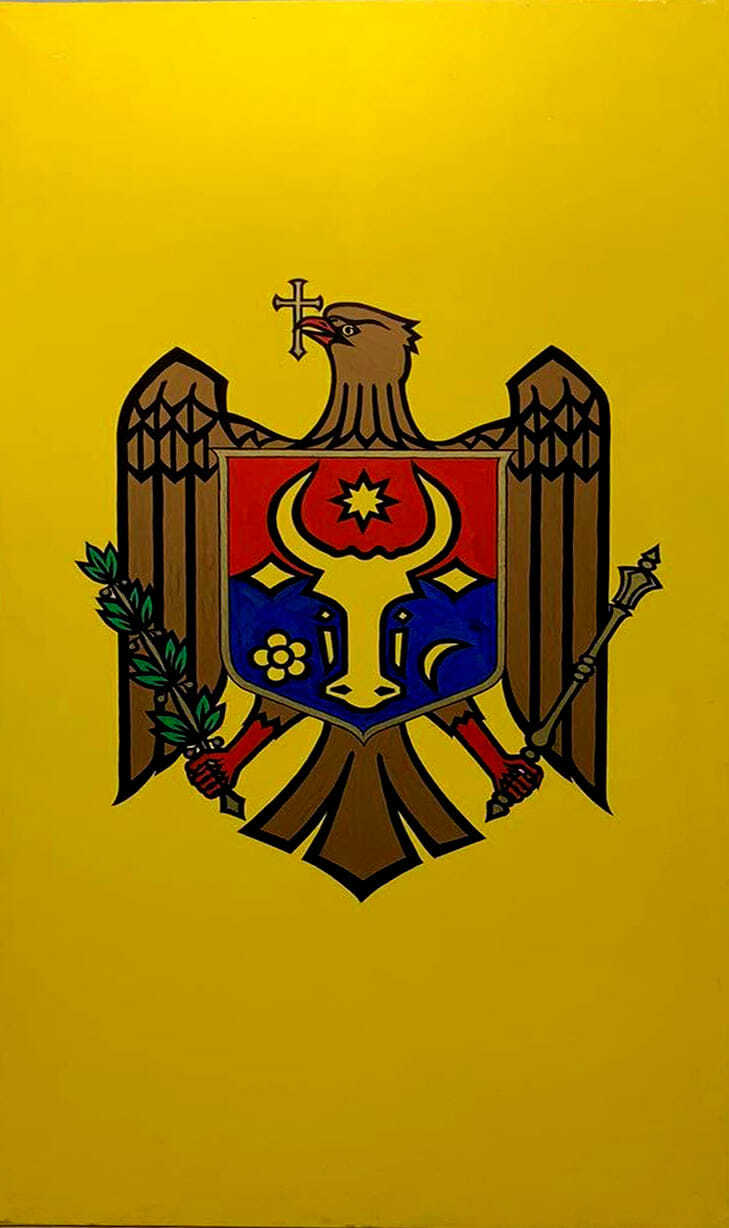  #Exhibit of the Month #Exhibit of the Month
August 2023
Panel. The State Coat of Arms of the Republic of Moldova
Authors: Gheorghe Vrabie and Maria Dogaru. Drawing: by Gheorghe Vrabie; original; 50 x 80 cm, collection of the National Museum of History of Moldova
 The State Coat of Arms of the Republic of Moldova as a heraldic identity symbol of the new state is the result of extensive discussions attended by the press, scholars, plastic artists, politicians of all colors, as well as the broad masses of the population. This process started immediately after the approval on April 27, 1990 of the State Flag - the tricolor.
The State Coat of Arms of the Republic of Moldova as a heraldic identity symbol of the new state is the result of extensive discussions attended by the press, scholars, plastic artists, politicians of all colors, as well as the broad masses of the population. This process started immediately after the approval on April 27, 1990 of the State Flag - the tricolor. On May 1, 1990, the republican press announced the start of the contest for the development of the state coat of arms. More than a hundred scientists and visual artists participated in the competition, presenting around 130 projects. On May 12, the Presidium of the Supreme Soviet created a special Commission for the contest, chaired by the Speaker of the Parliament Mircea Snegur. Following the Commission's decision, on July 18, 1990, the official newspaper "Moldova Socialistă" published 18 coat of arms projects for public discussion, which were displayed in the foyer of the Supreme Soviet building. After two months of heated public discussions, on September 19, two projects, selected by the Competition Commission, signed by the painters Gheorghe Vrabie and Andrei Mudrea, were published on the pages of "Sovereign Moldova". After the support of Gh. Vrabie's project by the National Commission of Heraldry, Genealogy and Sigilography of the Romanian Academy in the meeting of October 23, 1990, he was joined by the Romanian heraldist Maria Dogaru. In the meeting of October 30, the Presidium of the Supreme Soviet of the SSR decided to support Gh. Vrabie's project, and on November 3, 1990, the new state coat of arms was adopted by law. According to paragraph 3 of article 12 of the Constitution of the Republic of Moldova, the State Coat of Arms has the following official description: "The State Coat of Arms of the Republic of Moldova represents a horizontally cut shield, with the upper part colored red, the lower part blue, charged with the head of bour having between the horns an eight-rayed star. The bour's head is flanked to the right by a five-petalled rose, and to the left by an outlined crescent. All elements represented in the shield are gold (yellow). The shield is placed on the breast of a natural eagle carrying in its beak a golden cross (crusaded eagle) and holding in its right claw a green olive branch and in its left a golden scepter".
|

















































